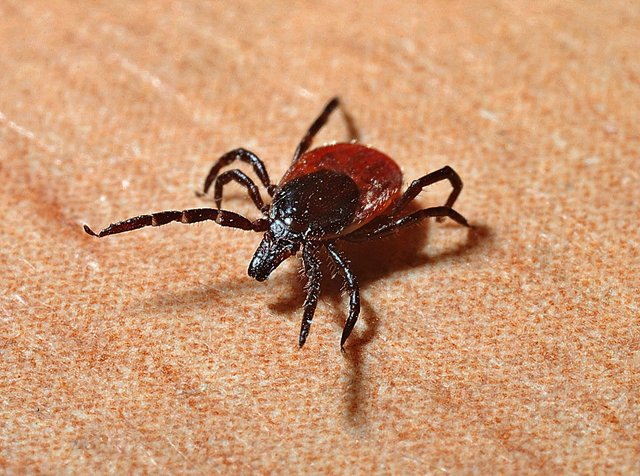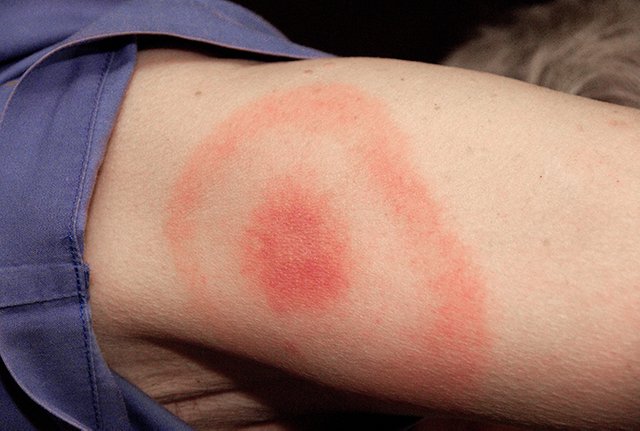What's Lyme Disease ?
I am delighted to announce the launch of our new series “Morbus” which means 'disease' in Latin. This series is fundamentally a sequence of posts dedicated to the general public, In each post, I will be covering a certain disease, its symptoms, causes and the way to prevent them. I will make sure to explain everything clearly in an effective way that makes it easy to understand. However, this 'knowledge' won't replace a doctor’s visit. I'm looking forward to your support. With that being said, let's get into today's disease...

In the United States alone, 329,000 cases of Lyme disease occur annually which is a lot, in fact, that’s more than six times the number of people diagnosed with AIDS each year. Lyme disease, also known as Lyme borreliosis, is a bacterial inflammatory infection primarily spread and transmitted by Ixodes ticks (*a genus of hard-bodied ticks). These little deer ticks become infected after feeding on infected deer or mice, and then pass it on to other animals, including human hosts.
Lyme disease is caused by Borrelia bacteria, in fact, there are many genospecies (*a group of organisms in which interbreeding (=coupling) is possible) of Borrelia that can cause this disease in humans. The blood-sucking arachnids can’t jump or fly, but instead live in tall grasses, wooded areas, shrubs and bushes and grab onto the victim when they pass by, thus, people who live in wooded areas and those who spend a lot of time "in the wilderness" are more likely to get this illness. Ticks are more active during summer which lead to the belief that you can’t contract Lyme disease in the winter. Unfortunately, disease-carrying ticks can survive in very cold climates and may still be active in winter months.

Notes: Lyme disease and Lime disease are very different, yet often confused with each other.
Although ticks are commonly thought of as insects, they are arachnids like spiders and scorpions.
At the beginning,Lyme disease is just presented as a unique skin lesion called erythema migrans or bull's eye developed from the bite site.This lesion is pathognomonic for Lyme borreliosis meaning that its presence confirms the diagnosis but you should also know that this lesion can be absent in half of the patients.In any case, if you ever notice this lesion you should consult a doctor immediately.

Other skin lesions can be seen such as a rash, an edema(swelling), conjunctivitis (red sensitive eyes) or even a general erythema.
Over time general symptoms start to take action including fever, headache, fatigue and migrant muscle.Some patients report having large joint and bone pain.
At this point, if the patient doesn't consult a doctor, serious neurological signs can develop from between approximately months to years after infection and perhaps the most frequent is meningitis which is basically an inflammation of the exterior protective layers of the brain.
A severe form of neuroborreliosis is encephalitis which is an inflammation of the whole brain this time.This form of Lyme disease is a serious condition and an emergency because it mimicked strokes and can manifest by limb paresis, speech abnormalities, cerebellar signs, visual disturbances, seizures, progressive dementia.
Lyme disease is a silent disease and it's possible to be very ill and outwardly look fine. fatigue and neurologic dysfunction don’t often change a person’s appearance. Family and friends can be sometimes hard on victims simply because they don’t look that sick, thus the myth that goes If the patient doesn’t look sick, they can’t have Lyme disease is totally inaccurate.
Luckily Lyme disease is totally curable in 99 % of the cases.Treatment includes antibiotics for 2 to 3 weeks and the molecules that work best for remission are amoxicillin, doxycycline, and cefotaxime.
Now you have a pretty good idea about Lyme disease and how to detect it.The rash is a pretty good indication that you may have been bitten.On the other hand, the best way to prevent and protect yourself from Lyme disease is to follow certain advice.For instance, you need to know where to find ticks particularly in and near wooded or grassy areas, therefore wear pants and socks in the forest, areas rich in trees and while handling fallen leaves or gardening.If you decide to camp make sure to wear a tick repellent on your skin and clothing that has 20 percent or more DEET, picaridin, IR3535, lemon oil, or eucalyptus as an ingredient.
Last but not least make sure to perform daily tick checks in the exposed areas and Remove an attached tick with fine-tipped tweezers as soon as you notice it.Your chance of getting Lyme disease is extremely low if a tick has been there for less than a day.
References :
https://www.cdc.gov/lyme/index.html
https://www.ncbi.nlm.nih.gov/pmc/articles/PMC3542482/
http://annals.org/aim/article-abstract/696718/early-clinical-manifestations-lyme-disease
Picture Credit:
Thumbnail - pixabay.com
All the rest- wikimedia.org
One more thing, Join the #steemSTEM channel, A community project to promote science technology engineering and mathematics postings on Steemit.

A professor i know, studied TBE (tick-borne encephalitis) which is the untreateble virus infection that you can get from ticks. Mostly common in Europe. Thier study group were part of the "early" creation of the TBE prevention-vaccine that exists and is available to the public here in Sweden. The vaccine gives protection against TBE for about a year or so before you need to take another shot. Dont know if is available elsewhere yet.
Sounds like an interesting topic